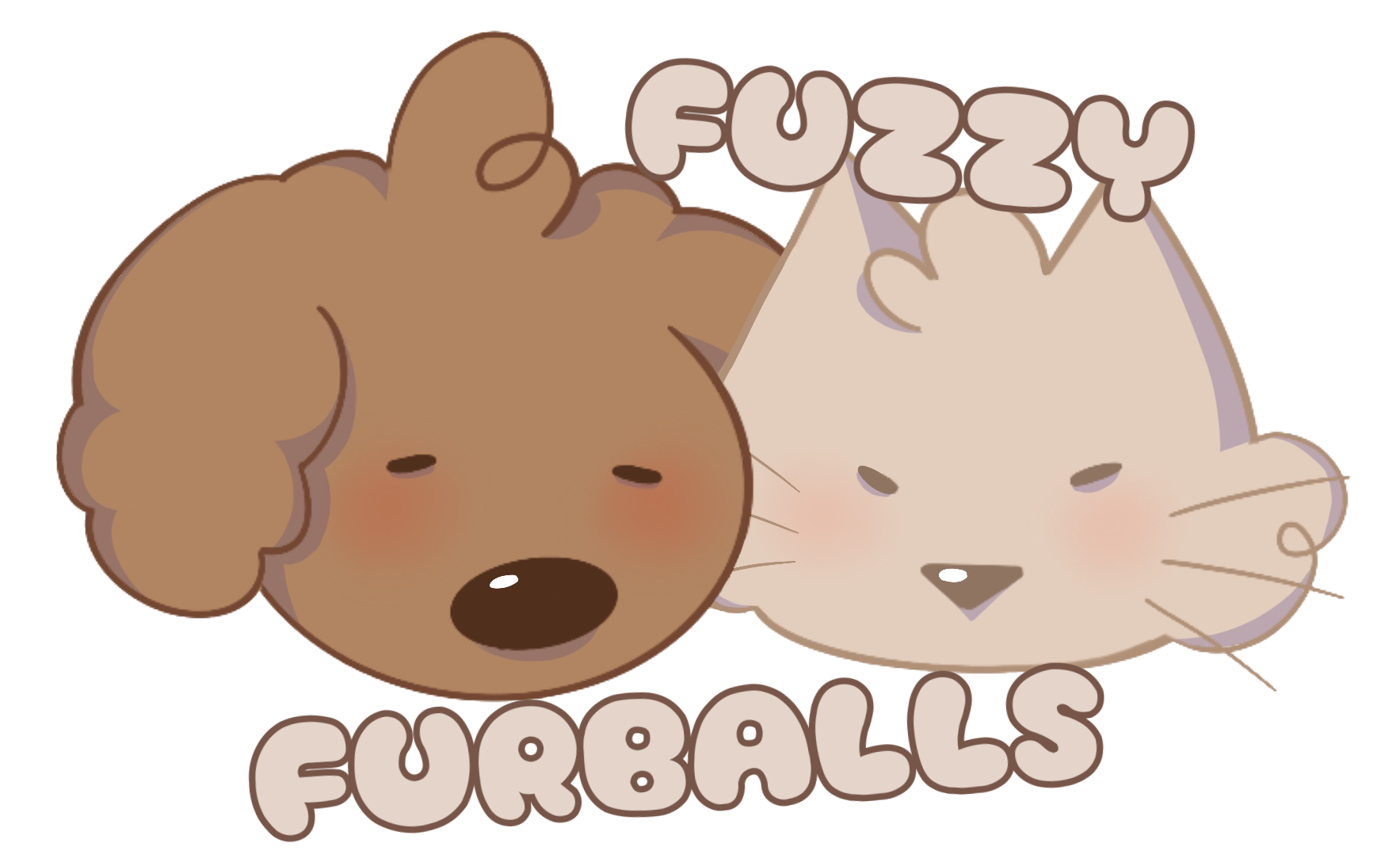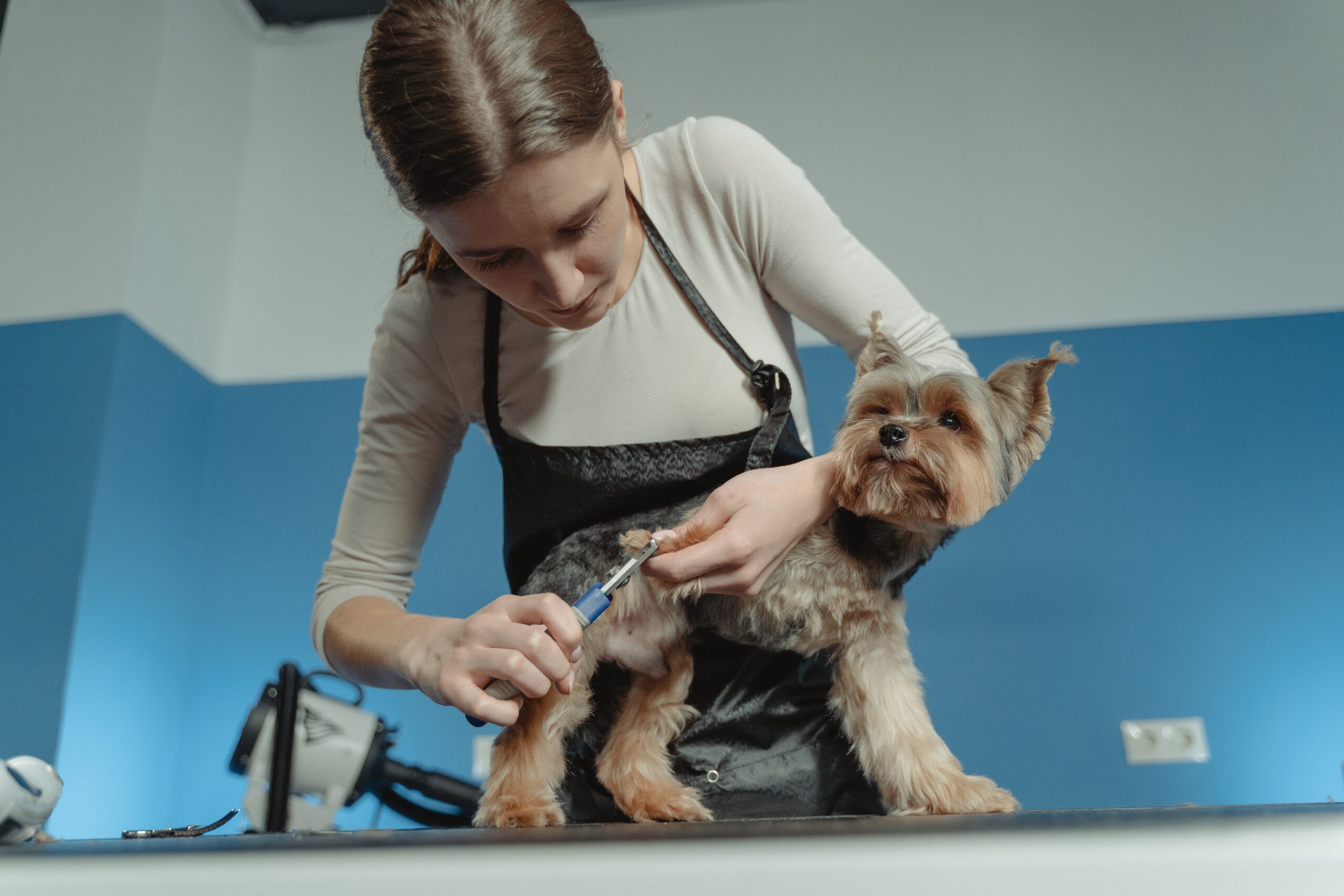Keeping your furry companion’s nails well-maintained is an essential aspect of responsible pet ownership. Beyond just aesthetics, regular nail trimming for dogs plays a pivotal role in ensuring their overall health and comfort. While many pet owners may view nail care as a minor task, its significance cannot be understated. Overgrown nails can lead to a host of health issues, ranging from discomfort and pain to potential mobility problems.
Just as humans require regular haircuts and grooming, dogs need their nails trimmed to prevent complications. The natural growth of a dog’s nails, if left unchecked, can cause several problems. Overgrown nails can lead to incorrect paw alignment, affecting your canine companion’s posture and gait. They may also experience discomfort when walking or running, which can impact their overall quality of life. In severe cases, excessively long nails can even lead to joint problems and bone deformities.
With the well-being of our beloved pets in mind, this article delves into the world of dog nail trimmers. Choosing the right nail trimmer can make a significant difference in the effectiveness and safety of the nail trimming process. We will guide you through the various types of nail trimmers available, offering insights into their unique features, advantages, and potential limitations. Whether you have a small breed with delicate nails or a larger dog with more robust ones, our comprehensive guide will assist you in making an informed decision. Join us as we explore the top picks in the market and provide expert advice on how to ensure a safe and successful nail trimming routine for your furry friend.
Types of Dog Nail Trimmers
Guillotine-style Nail Trimmers
- Explanation of the Design and Usage
Guillotine-style nail trimmers feature a unique design where a small hole is present for inserting your dog’s nail. By squeezing the handles, a blade is activated, effectively cutting the nail. This design offers a controlled and straightforward approach to nail trimming. It is particularly well-suited for dogs with small to medium-sized nails. - Pros and Cons
Pros:- Precise cutting mechanism ensures accurate results.
- Straightforward operation, making it ideal for beginners.
- Suited for dogs with delicate paws or smaller nails.
- Cons:
- Might not be as effective for larger dogs or thick nails.
- Limited visibility of the cutting area may lead to over-cutting.
- The blade may require frequent sharpening for consistent performance.
Scissor-style Nail Trimmers
- Overview of the Design and Functionality
Scissor-style nail trimmers resemble traditional scissors but are specially designed for dog nail trimming. The curved blades provide a clean cut by encompassing the nail within their arch. They come in various sizes to accommodate different nail thicknesses. - Advantages and Limitations
Advantages:- Enhanced control over cutting, minimizing the risk of over-cutting.
- Suitable for a wide range of dog sizes and nail types.
- Some models feature ergonomic handles for comfortable use.
- Limitations:
- Requires proper technique for precise cutting.
- Blades may become dull over time and need periodic sharpening.
- More effort might be needed for larger or tougher nails.
Grinder-style Nail Trimmers
- How Grinders Work for Nail Maintenance
Grinder-style nail trimmers, also known as rotary tools, utilize a rotating grinding mechanism to gradually file down a dog’s nails. They are particularly beneficial for dogs sensitive to traditional clippers or those with hard nails. The grinder’s sandpaper-like surface gently removes nail material. - Benefits and Potential Drawbacks
Benefits:- Gentle and gradual trimming suitable for anxious dogs.
- Reduced risk of accidentally cutting the quick (nail’s blood vessel).
- Versatile for handling nails of various sizes and thicknesses.
- Potential Drawbacks:
- Noise generated might unsettle some dogs.
- Requires acclimatization and training for both owner and dog.
- Grinders may need replacement parts due to wear and tear.
As we continue to explore, you’ll gain insights into the most suitable nail trimmer type for your dog’s unique needs. Each option presents its own set of advantages, ensuring a comfortable and effective nail trimming experience for both you and your four-legged friend.
Factors to Consider When Choosing Nail Trimmers
Dog Size and Breed
- Different Needs for Small, Medium, and Large Breeds
When selecting nail trimmers, the size of your dog is a critical factor. Small breeds typically have finer and more delicate nails, necessitating a trimmer that offers precision. Medium-sized dogs may have varying nail textures, while large breeds often require robust trimmers capable of handling thicker nails. - Specific Considerations for Different Coat Types
The type of coat your dog has can influence the accessibility and visibility of the nails. Long-haired breeds might require trimmers with longer handles or additional safety features to avoid cutting the surrounding fur accidentally. Short-haired breeds might allow for easier nail identification and cutting.
Nail Thickness and Texture
- Trimmers Suitable for Thick or Hard Nails
Dogs with thick or hard nails require trimmers with strong, sharp blades to ensure efficient and painless trimming. Models with adjustable pressure settings can be particularly beneficial, allowing you to adapt to your dog’s nail thickness. - Options for Softer Nails
For dogs with softer nails, a gentler trimming approach is needed. Choosing a trimmer with a finer blade or opting for a grinder-style trimmer can help prevent over-cutting and discomfort.
Safety Features
- Built-in Safety Guards or Sensors
Some modern trimmers come equipped with safety guards or sensors that help prevent over-cutting. These features can be especially valuable if you’re concerned about accidentally cutting the quick, the sensitive part of the nail containing blood vessels and nerves. - Minimizing the Risk of Over-cutting
Nail trimming accidents can be minimized by selecting trimmers with features designed to prevent excessive cutting. Consider trimmers with depth guides or guards to help control the cutting depth, reducing the chances of injuring your dog.
Comfort and Ergonomics
- Importance of a Comfortable Grip for Both the Dog Owner and the Dog
Comfortable handling of the trimmer is crucial for both you and your dog. A trimmer with an ergonomic handle provides better control, reducing strain on your hand and making the process less stressful for your pet. - Ergonomic Designs for Ease of Use
Look for trimmers with features such as non-slip grips and contoured handles. These ergonomic designs enhance maneuverability, allowing you to maintain a steady grip during the trimming process.
By taking these factors into account, you can ensure that you select the most appropriate nail trimmer for your dog’s individual characteristics and needs. Remember, the right choice of nail trimmer not only enhances your dog’s comfort but also contributes to a safer and more enjoyable nail trimming experience for both you and your loyal companion.
Top Picks: Review of the Best Dog Nail Trimmers
Model 1: Resco Deluxe Dog Nail Clippers

Features and Benefits: The Resco Deluxe Dog Nail Clippers boast a user-friendly guillotine-style design, catering perfectly to small to medium-sized dogs. With its precise cutting mechanism, these clippers ensure clean and accurate cuts, effectively reducing the risk of nail splintering or cracking. Notably, the clippers are equipped with a built-in safety guard, a crucial feature that prevents over-cutting and adds an additional layer of protection to ensure your furry friend’s utmost comfort.
User Reviews and Ratings: Praised for their simplicity and ease of use, the Resco Deluxe Dog Nail Clippers have garnered enthusiastic acclaim from pet owners. Many commend their accuracy in trimming even the most delicate nails, making them a preferred choice among small breed owners. The integrated safety guard has received positive feedback for its ability to minimize the potential of cutting the quick. Consistently highly rated by users, these clippers are valued for their reliability and gentle approach to maintaining your dog’s nails.
Model 2: gonicc Professional Pet Nail Clippers

Notable Characteristics and Advantages: The gonicc Professional Pet Nail Clippers feature a scissor-style design that delivers heightened control, rendering them suitable for a diverse range of dog sizes and nail types. Characterized by their curved blades, these clippers facilitate precise cutting, effectively reducing the likelihood of accidental over-cutting. Enhanced with ergonomic handles, they offer a comfortable grip, minimizing strain during use and promoting a less stressful nail trimming experience for both you and your canine companion.
Real-life User Experiences and Feedback: Selected by discerning dog owners, the gonicc Professional Pet Nail Clippers have garnered appreciation for their versatility and proficiency in managing various nail textures. The scissor-style design resonates particularly well with individuals seeking meticulous cutting precision. The clippers have earned recognition for their durability and consistent performance, positioning them as a trustworthy choice for ongoing nail maintenance.
Model 3: Casfuy Dog Nail Grinder

Grinding Mechanism and its Benefits The Casfuy Dog Nail Grinder functions through a grinding mechanism, offering a gradual and controlled approach to nail maintenance. With its sandpaper-like surface, it adeptly manages both soft and hard nails. The added advantage of adjustable speed settings ensures a tailored experience based on your dog’s comfort level, rendering it an exceptional choice for pets prone to anxiety.
User Satisfaction and Potential Drawbacks Enthusiastic pet owners who have embraced the Casfuy Dog Nail Grinder applaud its discreet operation and the gradual nature of its trimming process, making it particularly well-suited for dogs with averse reactions to traditional clippers. The ability to modulate nail filing speed and the minimized risk of cutting the quick are notable highlights. Some users acknowledge that the grinding process may take slightly longer than traditional clipping methods, but the overall comfort and satisfaction it affords far outweigh this minor time investment.
In conclusion, these top picks represent a diverse range of nail trimmers tailored to different preferences and needs. Whether you opt for the precision of a guillotine-style trimmer, the control of a scissor-style trimmer, or the gentle filing of a grinder-style trimmer, each option offers distinct advantages to ensure a safe and effective nail trimming experience for both you and your canine companion.
Step-by-Step Guide to Safe and Effective Nail Trimming
Preparing Your Dog and the Trimming Area
- Gather Supplies: Collect the chosen nail trimmer, styptic powder (for emergencies), treats, and a towel.
- Calm Environment: Choose a quiet, well-lit area where your dog feels comfortable.
- Familiarization: Allow your dog to inspect the trimmer and become accustomed to its presence.
Demonstrating Proper Nail Holding and Cutting Techniques
- Handling Paws: Gently hold your dog’s paw, applying slight pressure to expose the nail.
- Identifying Quick: Observe the nail, aiming to cut just before the quick (pink area containing blood vessels).
- Making the Cut: Use confident, controlled movements to trim a small portion of the nail. Avoid cutting at an angle.
Tips for Managing Anxious or Uncooperative Dogs
- Positive Association: Associate nail trimming with treats or rewards to create a positive experience.
- Gradual Acclimatization: Introduce the trimmer gradually, allowing your dog to get comfortable with it.
- Breaks: If your dog becomes anxious, pause and resume later to avoid overwhelming them.
Dealing with Accidental Cuts and Ensuring Comfort Post-Trimming
- Accidental Cuts: If you accidentally cut the quick, apply styptic powder to stop bleeding. Remain calm to keep your dog relaxed.
- Comfort Measures: Reward your dog with treats and praise after each successful trimming session.
- Observe Regularly: Regularly check your dog’s nails for growth and schedule trimming sessions accordingly.
Remember, patience and gradual training are key to successful nail trimming. If you’re unsure or uncomfortable, consider seeking guidance from a professional groomer or veterinarian to ensure your dog’s safety and well-being throughout the process. By following these steps, you’ll master the art of nail trimming and provide your furry friend with the care they deserve.
Maintenance and Care of Dog Nail Trimmers
Cleaning and Sterilization Practices
- Regular Cleaning: After each use, wipe the trimmer blades with a clean, damp cloth to remove any nail debris.
- Disinfection: Periodically sanitize the trimmer using pet-safe disinfectants or alcohol wipes to prevent bacterial buildup.
- Drying: Ensure the trimmer is completely dry before storing it to prevent rusting.
Sharpening or Replacing Blades
- Blade Maintenance: Check the trimmer’s blades for dullness. If they appear worn or struggle to cut cleanly, it’s time for sharpening or replacement.
- Sharpening: Follow manufacturer instructions or consult a professional for blade sharpening. Alternatively, consider purchasing replacement blades if available.
Storage Considerations for Longevity
- Dry Storage: Store the trimmer in a dry area to prevent rust and corrosion.
- Protective Covers: Some trimmers come with protective covers. If not, consider using a cloth or plastic cover to shield the blades.
- Keeping Parts Together: If your trimmer has removable parts, store them together to avoid misplacing them.
- Away from Pets and Children: Ensure the trimmer is stored out of reach of pets and children to prevent accidents.
By practicing proper maintenance and care, you can extend the lifespan of your dog nail trimmer and ensure its continued effectiveness. Regular cleaning, blade maintenance, and appropriate storage will not only keep the trimmer in optimal condition but also contribute to a safe and successful nail trimming experience for you and your furry companion.
Expert Insights: Veterinarian Recommendations
Interview with a Veterinarian about the Importance of Nail Care
To gain a deeper understanding of the significance of nail care for dogs, we had the privilege of interviewing Dr. Sarah Turner, a highly respected veterinarian renowned for her expertise in pet health. Dr. Turner emphasized the critical role that regular nail trimming plays in maintaining a dog’s overall health and well-being. She elaborated on how long nails can lead to discomfort, abnormal gait, joint issues, and even potential infections if left unattended. Dr. Turner highlighted that nail care is an essential component of responsible pet ownership, contributing to a happier and healthier life for our furry companions.
Expert Insights into Selecting the Right Nail Trimmer
Dr. Turner provided valuable insights into the selection process for dog nail trimmers. She emphasized that the right trimmer should be chosen based on factors such as the dog’s size, nail thickness, and individual preferences. Dr. Turner also recommended considering trimmers with safety features, like guards or sensors, to minimize the risk of over-cutting. She emphasized the importance of investing in a quality trimmer that ensures a smooth and stress-free experience for both the dog and the owner.
Common Mistakes to Avoid during the Nail Trimming Process
Drawing from her extensive experience, Dr. Turner shared common mistakes pet owners should steer clear of during nail trimming. One notable error is neglecting the quick—the sensitive part of the nail containing blood vessels and nerves. Dr. Turner advised pet owners to take their time and trim small portions to avoid accidental injuries. She also cautioned against cutting nails too short, which can lead to bleeding and pain. Additionally, Dr. Turner highlighted the significance of using proper lighting and handling techniques to prevent anxiety and stress in dogs during the process.
By incorporating these insights from a seasoned veterinarian, pet owners can enhance their knowledge of nail care best practices and navigate the nail trimming process with confidence and care. The well-being and comfort of our beloved dogs remain at the forefront, ensuring a positive and beneficial experience for both pet and owner.
Conclusion
In closing, we underscore the significance of regular nail trimming as a fundamental aspect of responsible dog ownership. The health and comfort of our canine companions are intricately linked to well-maintained nails. Overgrown nails can lead to a cascade of problems, from discomfort and posture issues to more severe joint complications. Regular nail care ensures that your furry friend enjoys a higher quality of life, free from pain and mobility constraints.
As diverse as our furry friends are, so too are the options for dog nail trimmers. We encourage dog owners to embark on the journey of finding the perfect fit for their unique companion. Factors like size, nail thickness, and temperament should guide your choice. By selecting the right trimmer and adhering to proper techniques, you can foster a positive and stress-free nail trimming experience for both you and your beloved dog.
Establishing a healthy nail care routine for your dog is an investment in their overall well-being. As you embark on this journey, remember the insights shared by experts and the step-by-step guide provided in this article. Regular nail trimming, when performed with care and consideration, contributes to the holistic health of your pet. By prioritizing their comfort, ensuring safety, and maintaining consistency, you create a positive grooming ritual that strengthens the bond between you and your loyal companion.
In the grand tapestry of pet care, nail trimming is a thread that weaves through the fabric of a happy and healthy dog’s life. As responsible pet owners, let’s commit to this essential practice, ensuring that our dogs move with grace and vitality, knowing that they are cherished and well-cared-for members of our families.










